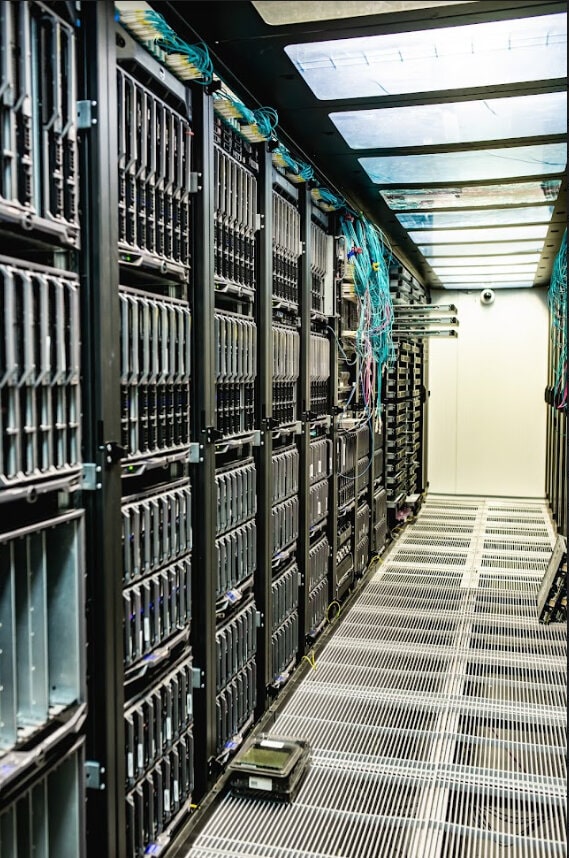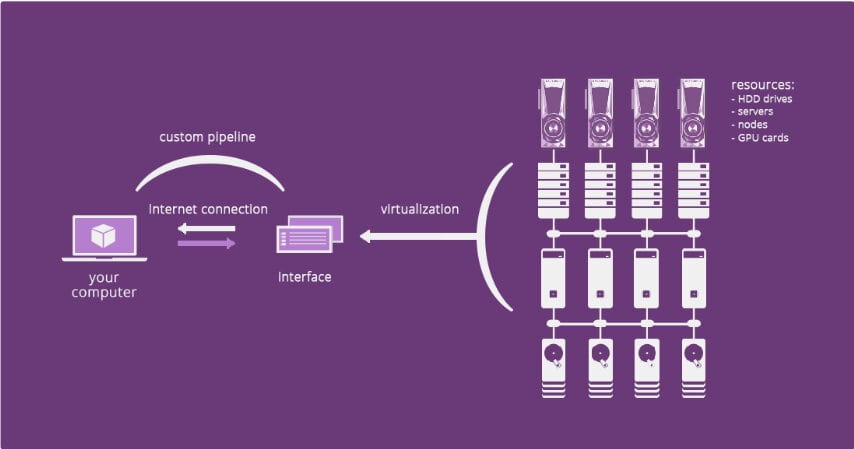
If you’ve been enjoying Photoshop’s latest neural filters, working on CAD or adding motion capture data to your 3D characters online, you’ve been engaging with cloud-based technology. It’s everywhere these days, and while the turning of the technological tide will eventually bring forth an alternative, cloud computing has been a boon for digital content creators – especially those that work with 3D. One of the more deeply embedded applications of cloud computing in the 3D computer graphics industry is cloud rendering.
Cloud rendering has become an increasingly popular option for professionals who need to create high-quality 3D content with often short and rigid deadlines. By leveraging the power of cloud computing, we can produce more complex and detailed scenes in a shorter amount of time and with less investment in hardware. In this article, we’ll take a closer look at what cloud rendering is, its advantages, applications, challenges, and the future of this technology.
For affordable, easy-to-use and robust cloud rendering solutions with human support, have a look at our online render farm and have a chat with our team at any time of the day!

Cloud rendering is the process of leveraging remote computing resources to render 3D graphics and animations, rather than rendering them on a local computer. Cloud rendering offers scalability, accessibility, and cost-effectiveness as advantages over traditional on-premise render farms. It allows for parallelizing rendering digital graphics and animations, reducing rendering time and cost, and improving overall performance.
If cloud computing is a technology that allows users to access and use computing resources over the internet, cloud rendering takes this one step further by leveraging these remote computing resources to render 3D graphics and animations. Instead of rendering 3D scenes on a local computer, the data parsing and processing are done on remote servers in the cloud.
The benefits of this are felt the most in rendering 3D animation, since instead of rendering one image after another in sequence on a single machine, all images or frames that comprise an animation can render concurrently. All of the final output is then sent back to the user's workstation, to be edited further before being converted into a video. This means a complex scene that would take over an hour for every frame in the sequence would finish rendering in just a little more than an hour since all the frames are rendering at the same time.
In short, cloud rendering refers to the process of parallelizing rendering digital graphics and animations by having multiple machines each render a frame or even sections of a frame on remote servers over the internet. A local computer or workstation no matter how powerful would still need to render frames one after the other. This allows for more efficient and cost-effective rendering, as well as the ability to tap into a large network of computers for increased processing power.
While cloud rendering services offer many advantages over maintaining an on-premise render farm, one of its biggest draws is the freedom from upkeep costs.
Traditional render farms require a large upfront investment in hardware, software licenses, and IT infrastructure to set up and maintain the rendering farm. In contrast, cloud render farms provide access to computing resources on a pay-per-use basis, allowing for greater flexibility and scalability in resource allocation.
Additionally, traditional render farms typically require a significant amount of time and resources to set up and maintain, while cloud render farms can be set up quickly and easily without any hardware or software installation. However, the cost of using cloud render farms can quickly add up if the project requires a large amount of computing resources or if the rendering time is extensive.
Here's a hypothetical loose breakdown of costs for maintaining a traditional render farm and using a cloud rendering service:
Traditional render farm:
Total cost per year: $80,000 - $150,000+
Cloud rendering service:
Total cost per year: $10,000 - $50,000+
Of course, these costs will vary depending on the size of your render farm or the scale of your rendering needs. However, in general, using a cloud rendering service can be a more cost-effective solution, particularly for small to medium-sized businesses or freelance artists.
While local or in-house render farms have been and continue to be used by some larger studios, cloud rendering can give smaller studios and individuals a much-needed competitive edge. Some of the advantages it offers are:
A. Scalability: One of the key advantages of cloud rendering is its scalability. As the needs of your projects change, the resources available in the cloud can be adjusted accordingly, allowing you to handle larger and more complex projects without having to invest in additional hardware.
B. Accessibility: Cloud rendering also provides greater accessibility to professionals working in the 3D graphics industry. With the ability to access and use computing resources over the internet, it's possible to collaborate with others from different locations and to work from anywhere, at any time.
C. Cost-effectiveness: Another important advantage of cloud rendering is its cost-effectiveness. Rather than having to invest in expensive hardware, cloud rendering allows you to access the computing resources you need on an as-needed basis, reducing upfront costs and ongoing expenses.
D. Improved performance: With cloud rendering, you can tap into the power of remote servers to perform rendering tasks, resulting in improved performance. By offloading processing to the cloud, you can free up your local machine for other tasks and improve overall workflow.
A. Architecture and Interior Design: Cloud rendering is widely used in the architecture and interior design industry, allowing designers and architects to create high-quality 3D visualizations of their designs quickly and easily.
B. Gaming: The gaming industry is another area that benefits greatly from cloud rendering. With the ability to access powerful remote servers, game developers can create more complex and detailed graphics, resulting in a better gaming experience for players.
C. Film and Animation: The film and animation industry also relies heavily on cloud rendering. With the ability to render complex scenes and animations in a shorter amount of time, filmmakers and animators can create high-quality content faster and more efficiently.
D. Product Design and Engineering: In the product design and engineering industry, cloud rendering is used to create high-quality 3D visualizations of products, allowing designers and engineers to refine their designs before going into production.

While cloud rendering offers many benefits, it also comes with its own set of challenges. Fortunately, many online render farm services are available that handle them:
There are various types of cloud rendering services available to artists and studios that offer an array of options for rendering their projects. From cloud-based solutions that reduce render times, to distributed rendering systems that utilize the power of multiple computers, each service caters to a different need.
One such model is the Cooperative Distributed Rendering System, in which users can render their projects on other users' computers for free. While this model is community-based and cost-effective, it comes with some drawbacks, including a lack of data security and support, making it less suitable for professional projects with tight deadlines.

Another popular model is Infrastructure as a Service (IaaS), which offers users a high level of customization and scalability, allowing them to create their own cloud pipeline according to their specific needs. While this model is perfect for big studios with large projects that require a custom solution, it is time-consuming to configure and requires in-house technical support to maintain the pipeline.

For a more automated approach to cloud rendering, users can turn to cloud render farm services such as ours at GarageFarm.NET. This model provides an all-inclusive service, allowing users to upload their project and dependencies to the service provider's file server, interface with their rendering management software from a browser, and pay only for the volume of rendered data with no additional fees for software setup, support, and tools provided by the farm.

The technical requirements of cloud rendering can vary depending on the specific service being used. In general, a computer with a modern web browser and a reliable internet connection is necessary for uploading project files and managing the rendering process through the service provider's web interface. Additionally, the rendering service may have specific software requirements for the 3D modeling or animation software being used. The hardware requirements can also vary depending on the complexity and size of the project being rendered, with more complex projects requiring more processing power and memory. Some cloud rendering services may offer access to high-performance hardware, such as powerful CPUs or GPUs, to speed up the rendering process.

Ultimately, cloud rendering service providers are the modern answer to the increasing demand and time constraints for animated 3D visualization and high-resolution 3D rendering. Rendering farm services are one of the most prominent adopters of this technology, and have become integral to production across many, if not most, of the 3D computer graphics industries. Even with all of the new, disruptive technology on the rise, cloud rendering will always hold a place in the 3D visualization workflow.